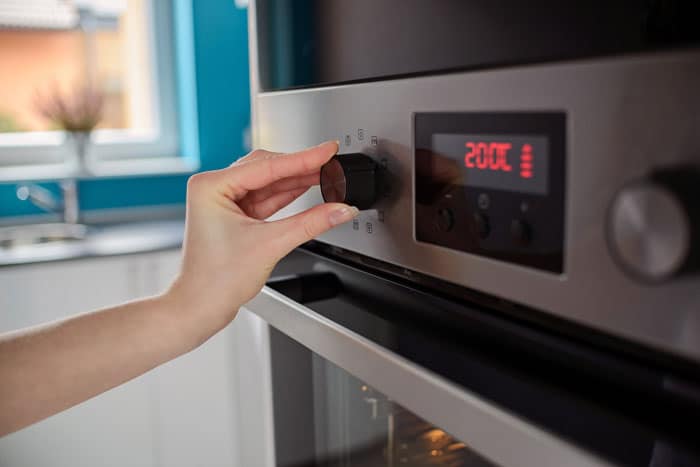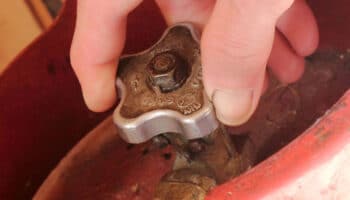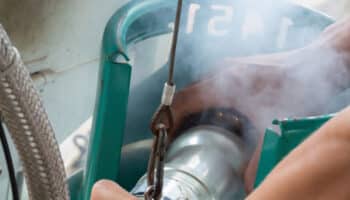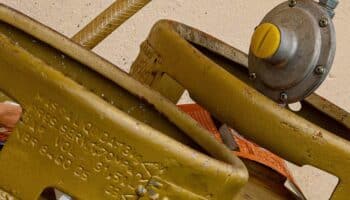We've independently reviewed this article to make sure it's as accurate as we can make it.
To find out more about our article creation and review process, check out our editorial guidelines.
Are you wondering why your house is so hot when it’s cold outside?
I’ve been there too! It’s super frustrating when your house is heating up while the weather is chilly, leaving you sweaty and uncomfortable.
But don’t worry; I’m here to help!
Your home can feel hot even when it’s cold outside because objects and people inside produce heat, and your home’s exterior construction can also trap heat. To fix the problem, you can create shade outside or use cross-ventilation to let cool air in and hot air out.
Read on to learn why your house is heating up and different ways to solve the problem!
Why Is My House Hotter Than Outside?
In this section, I’ll guide you through the different reasons that can explain why your house is heating up, even when it’s cool outside.
#1 You and Your Appliances Generate Heat
The temperature can be hotter inside than outside due to the natural heat produced by people and electronics in your house.

Here are some examples of a home’s typical heat sources and the approximate energy watts they release.
| Object | Amount of Energy(heat) in Watts |
| A resting human body | 100 watts |
| Someone working out or exerting themselves | 200 to 300 watts |
| Television | 100 watts |
| Computer | 100 watts |
| LED bulb | 20 watts |
| Refrigerator | 70 watts |
| Clothes dryer | Between 1,800 and 5,000 watts |
| Washing machine | 100 watts |
| Electric oven | 3,000 watts |
The released energy equals heat, which means that more than 8,000 watts of energy are being released in your home (assuming you only have a single TV or computer running).
I find that the more watts an electrical device consumes, the more heat it produces. So, if your home has several appliances and electronics, it will probably be hotter than outside.
#2 Heat Buildup
The next reason why your house is hotter than outside is heat buildup.
You see, the sun rises in the morning and hits your roof. Sunlight comes through your windows and hits your walls, floors, and furniture.
When objects are in the path of radiant heat waves, they absorb the energy, causing them to heat up.

So as the day progresses, objects in your home absorb more heat. And as long as the outside temperature remains hot, they hold on to that heat.
Your sofa, your mattress. They have become a heat source.
#3 Thermal Mass
In my experience, your home’s exterior construction can also explain why it’s hotter inside than outside. It’s all about “thermal mass”.
According to PCA, thermal mass is a property that enables building materials to absorb, store, and later release significant amounts of heat. Building materials absorb energy slowly and hold it for much longer.

So a brick home has more thermal mass than a timber or aluminum siding home, which is why brick homes are the norm in northern climates.
But of course, depending on how far north you are, you’re getting hot summers too. So for several months out of the year, that brick is working against you.
As it begins to cool off outside, the heat that’s been absorbed all day starts to release—keeping it warm inside.
#4 Thermal Inertia
Thermal inertia can also explain why your house is heating up even when it’s cool outside.
You see, thermal inertia is tied to thermal mass in that the density of an item dictates its inertia. Huh? Let me explain.
To put it as simply as possible, thermal inertia refers to how long it takes an object to gain or lose heat compared to its environment. It depends on the object’s density (mass) and conductivity (heat’s ability to travel through it).
An object with high thermal inertia will take a long time to reach the temperature of its surroundings, while an object with low thermal inertia will do it quickly.
So, some contents of your home can take longer to absorb heat than others, and some will take longer than others to release heat.
Here’s an example. If you took a piece of cotton cloth and a steel ruler of the same size and put them in the freezer, one would get colder faster. Now take them out and test how long it takes for each to warm up.
Set them both on the counter beside each other at room temperature. The piece of cotton will warm up much faster than the ruler since the ruler has a lot more thermal mass and inertia.
So, your home’s upholstery fabric will gain and lose heat quickly. But not necessarily all the foam padding below the fabric. All the ultra-modern metals in your home will accumulate and release heat slowly.
When you open your windows to let in cooler air, the amount of time it will take your warm interior air to reach equilibrium with the cool air depends on the thermal inertia of the contents in your home.
Is all that science making you have a headache? Yeah, me too.
So now that you understand—maybe—why your house is staying warm or perhaps even feels like it’s heating up when it’s cooler outside, let’s talk about what you can do.
What You Can Do to Cool Your House Down
If it’s cold outside but hot inside your house, you can try different short and long-term solutions to prevent heat buildup.
A blend of both solutions should do the trick, but the long term can be very long, so be aware.
Quick Solutions to Lower Your Home’s Temperature
If your house is hotter than outside and you want a short-term solution, mix the air up.
I find that simply opening your windows doesn’t guarantee that outside air will enter your home.
Air has to be pulled or pushed in. For example, on a windy and breezy day, the air can enter your home through the windows if the wind is blowing in the right direction.
But, if no wind is blowing in the right direction, you need to pull cool air in by using a window fan and directing the air in. You must also draw the hot air out, not just mix it with the new cooler air.
To draw the hot air out and create cross-ventilation, there needs to be a window open at the other end of the house with another fan blowing air out, creating a vacuum effect. As a result, the window on the other end of the house will also feel like it has a fan in it but blowing inwards.
Long-Term Solutions for Maintaining a Cooler Home
When I see a house that is heating up, even when it’s cool outside, I always protect it from the sun.
You see, the sun beating down on your home is part of the problem. It hits the roof, and depending on where you live, you’ll likely have a lot of insulation in the attic, which is good.
The issue is that many of us live in a temperate area that experiences both hot and cold seasons. However, homes are typically built to suit just one type of climate.
So, homes in temperate regions need to find a compromise between providing effective heating and cooling throughout the year.
I recommend protecting your home from the heat of the sun. If your property allows, plant high, fast-growing trees on the sunny side of your home to give it some shade.
Here’s a list of trees that will grow from 15 to 40 feet in 3 years.
- Thuja Green Giant Cedars
- Leyland Cyprus
- Red Maple
- Weeping Willow
- Poplar
- Royal Empress
You can also replace your current roof. Try shopping for shingles with a light color and add a radiant barrier to reduce heat gain in your home.
According to Energy Saver, radiant barriers can reduce cooling costs by 5% to 10% when used in a sunny climate.
Conclusion
Hopefully, now you know why your house is heating up, even when it’s cool outside.
Remember that people, objects, and the construction materials used in your home can contribute to heat buildup.
Don’t forget to block the sun outside or create cross-ventilation inside your house to pull in cool air and push out hot air.
Thanks for reading! If you found this article helpful, why not check out our related posts below?
Good luck!







